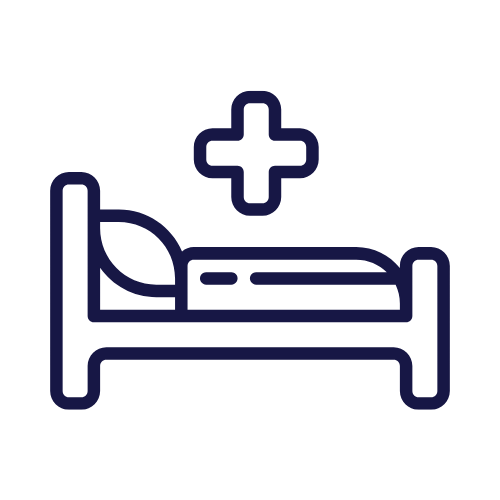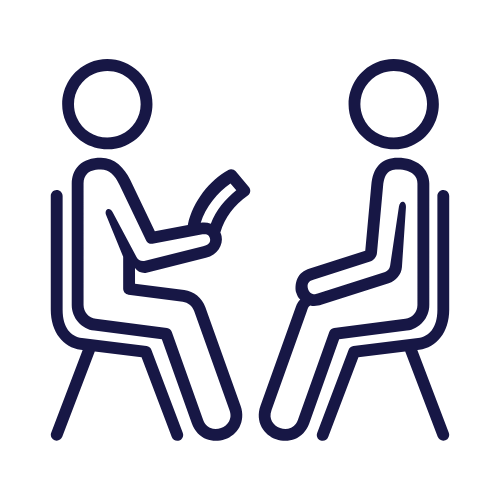EVIDENCE-BASED CARE FOR OPIOID ADDICTION
Getting Help at The Recovery Village Columbus
Opioid addiction often starts with a prescription for pain medication. As your body becomes dependent on it to function, you may find you’d do anything to take more. According to the Ohio Department of Health, 2020 surpassed 2017 as the year with the most unintentional drug overdose deaths in Ohio, with many of these deaths attributed to opioids. Ohio Attorney General Dave Yost also says that Ohioans are dying at a devastating rate because of opioid overdoses.
Opioid overdoses have taken thousands of lives, but evidence-based addiction treatment saves lives and can help you start a new life in recovery.

What Is Opioid Use Disorder?
Opiates and opioids are highly addictive drugs. A person with an opioid use disorder has lost control of their opioid or opiate use and continues to take these drugs despite negative consequences. Willpower alone may not improve this medical condition; it often takes opioid addiction treatment.
STATISTICS
Opioid Abuse Statistics in Ohio
As of 2020, there were 47,820 opioid prescriptions written for every 100,000 residents in Franklin County, Ohio. In 2018, Ohio doctors wrote 53.5 opioid prescriptions for every 100 residents, which is above the national average of 51.4 per 100.
Consider these statistics as well:
- In 2019 alone, the opioid fentanyl was involved in 76% of all overdose deaths in Ohio.
- Ohio’s rate of babies born with neonatal abstinence syndrome/neonatal opioid withdrawal syndrome was 11.6 incidents per 1,000 hospital births, compared to seven per 1,000 births nationwide.
- Data from the Franklin County Coroner’s Office shows 855 overdose deaths in the county in 2020, representing an increase of 83.9% since 2017.
Of the 855 overdose deaths in Franklin County in 2020, 87% involved the synthetic opioid, fentanyl. This rate represents an increase that has occurred over the last four years.

YOUR PARTNER IN RECOVERY
Why Choose Our Addiction Treatment Center?
Over 40,000 people have trusted The Recovery Village treatment centers with their addictions and co-occurring mental health conditions. Clients at The Recovery Village Columbus graduate from our evidence-based opioid rehab with the tools, self-awareness and support needed for an opioid-free life. Anyone can overcome opioid addiction if they devote themselves to their recovery and receive patient-centric, personalized care.
TREATMENT PROGRAMS
Our Alcohol Rehab Programs in Ohio
Recovery happens in stages. Our alcohol rehab programs provide support at each stage to give you the best chance at lasting sobriety.

Medical Detox
Opioid withdrawal is among the most uncomfortable types of withdrawal. Having 24/7 medical supervision and prompt treatment for symptoms makes the process safer and more comfortable.

Inpatient Rehab
Clients in inpatient rehab can devote themselves entirely to their recovery because they live onsite at the facility and receive daily, intensive addiction treatment.

Outpatient Rehab
Outpatient rehab offers the most flexibility around work or school hours. Clients live at home and visit the facility regularly for treatment.

Dual Diagnosis
Substance use often creates or worsens other mental health symptoms. We treat mental health and addiction symptoms together for a better life.

Medication-Assisted Treatment
People with severe opioid use disorders may need medication to avoid the worst withdrawal symptoms and reduce their risk of relapse.

Teletherapy
While most benefit from attending inpatient rehab first, some clients benefit from getting their outpatient treatment online after more intensive care.
WHAT TO EXPECT
What Happens in Opioid Rehab?
At The Recovery Village Columbus, we treat the whole person — not just their addiction. Our methods are backed by research and results, then personalized to meet each person’s needs.
Personal Therapy
Our counselors work with each client one-on-one to address their symptoms and thought patterns to find the root of their addiction.
Peer Support
Clients have regular group therapy sessions for support, guidance and fellowship with their peers in recovery.
Continuum of Care
People are more likely to relapse if they leave treatment too early. Clients step down to lower levels of care as their condition improves so they always have the right amount of support.
Supportive Downtime
Recreational therapies, sports and invigorating vistas help people build relationships with drug-free peers and develop hobbies that support recovery.
Invigorating Meals
Opioid misuse can wreak havoc on your health. Our chef creates delicious, nutritious meals designed to boost recovery and motivate inpatient clients.
Relapse Prevention
At every stage of care, we’re preparing you for graduation. We’ll build a relapse prevention plan and connect you with vital post-treatment resources.
Questions? We are available 24/7. Call 614-362-1686 Now.
PAYING FOR TREATMENT
Explore your insurance benefits to pay for opioid rehab
Most national and local insurance providers cover opioid rehab. We’re equipped to validate your insurance coverage or talk about private payment options with you.

Speak With Admissions
Speak with a Recovery Advocate who can answer your questions and get you started on your recovery journey.

MORE ON OPIOID ADDICTION
How Opioid Addiction Happens
Opiates and opioids are highly addictive drugs, and the risk of addiction increases when people misuse them. However, even prescription opioids can become problematic.
As the Centers for Disease Control and Prevention (CDC) explains, up to one-fourth of people with long-term opioid prescriptions from a primary care provider struggle with an opioid use disorder.
People who are addicted to opioids and opiates will continue to take the drugs despite understanding the negative consequences. In many cases, the drug stops providing pleasure. Someone with an opioid use disorder takes the drug because they have become physically dependent and want to avoid uncomfortable withdrawal symptoms.
People who are addicted to prescription opioids may engage in a practice called “doctor shopping,” in which they go to various doctors, seeking out more prescriptions. When prescriptions run out, people may turn to street-level drug dealers or begin using heroin, because it can be cheaper and easier to obtain on the street. In fact, about 80% of heroin users report that they began with prescription opioids before moving on to heroin.
Common Signs of Opioid Addiction
How can you tell if you or someone you love is addicted to opioids?
There are several common signs of opioid addiction:
- Changes in behavior or mood
- Changes in relationships
- Pill bottles in the trash frequently
- Doctor shopping or pharmacy shopping in an attempt to get more than one opioid prescription
- Lying about symptoms in an attempt to get prescriptions
- Isolation
- Financial problems
- Poor work or school performance
- Loss of interest in activities that the person used to enjoy
Continue reading at Signs, Symptoms and Side Effects of Opioid Abuse →
FAQs About Opioid & Opiate Addiction
What is considered an opioid?
Opioids and opiates are drugs that slow down the activity of the nervous system, which decreases pain and affects breathing. Common opioids include heroin, oxycodone (Percocet, Percodan, OxyContin), hydrocodone (Vicodin, Lortab, Norco), fentanyl, hydromorphone (Dilaudid), buprenorphine (Subutex, Suboxone), codeine, methadone, morphine, and tramadol (Ultram).
Why Are Opiates Addictive?
When someone uses opioids, the drug binds to the brain’s opioid receptors, which then triggers the release of feel-good chemicals, eventually causing the brain to seek out these substances again. The reaction that opioids cause in the brain creates a reduction in pain and an overall feeling of relaxation. People with an opioid use disorder take drugs repeatedly to achieve these same effects, but the body becomes dependent over time.
How bad is the opioid epidemic in Ohio?
Multiple sources show that Ohio’s opioid epidemic is worsening. For instance, data from Franklin County Coroner’s Office shows that overdose deaths are increasing, with most overdoses involving the synthetic opioid, fentanyl. Ohio’s rate of opioid prescriptions exceeds the national average, as does the rate of babies born addicted to opioids.
Are opioids legal in Ohio?
Opioid drugs like Vicodin and OxyContin are only legal with a prescription from a doctor, but some people may buy these drugs illegally from drug dealers, take prescriptions that belong to someone else, or misuse their own prescriptions. The opioid drug heroin is a Schedule 1 Controlled Substance, making it illegal in Ohio and across the nation, as the Federal government declares that it is highly addictive and has no medical use.
Are you at risk for opioid addiction?
Anyone can develop an opioid use disorder, especially if they misuse their prescription drugs, but certain risk factors can make addiction more likely. Research suggests that history of addiction, untreated mental health disorders and social or family environments that encourage drug use can also increase the risk of opioid addiction. For example, you may be at greater risk if your friends or family members misuse opioids.
VIDEO RESOURCES
Rehab at The Recovery Village Columbus
What Opioids Do To Your Body
Opioid Withdrawal: What To Expect
Ready to start your recovery?
We’re available to answer any questions, confirm your insurance benefits and schedule individualized treatment that works for you.

